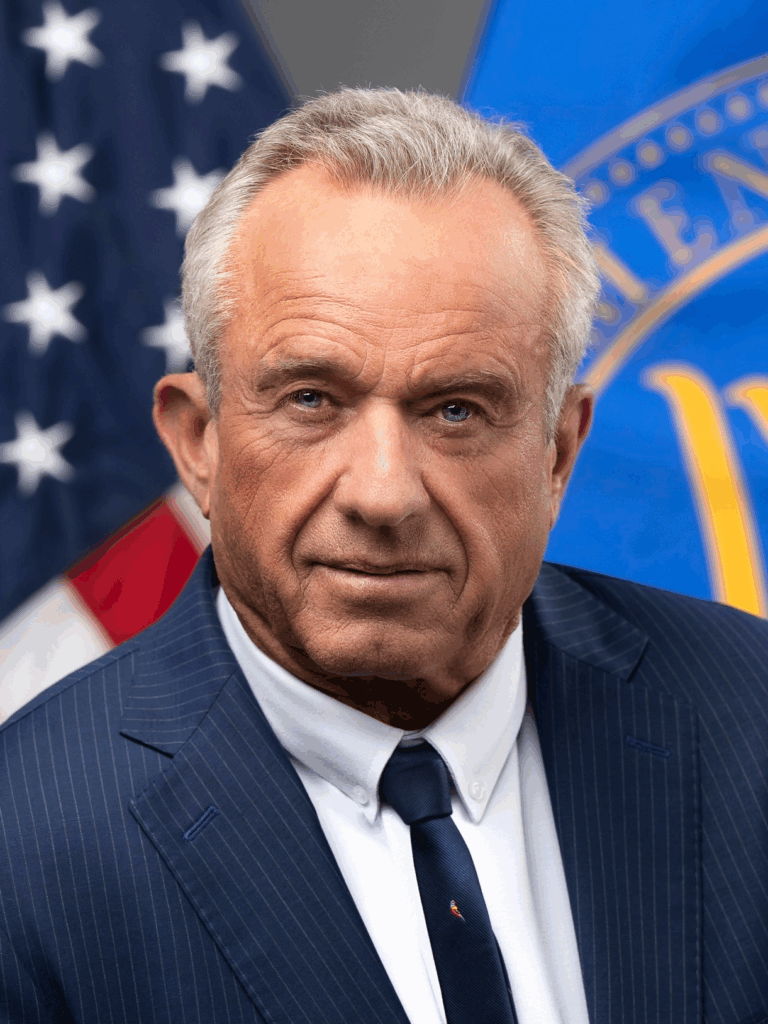At a NewsNation Town Hall, Robert F. Kennedy Jr. draws attention by enthusiastically promoting 5G technology. He warns about electromagnetic radiation (EMR) causing problems, citing a weak blood-brain barrier and cancer risks as the main concerns. He uses research he believes in to support his portrayal of danger, not just hot air. When he speaks, people pay attention because he is shouting for stricter regulations on those zippy towers that are popping up all over the place, not whispering.
Kennedy uses his activist energies to throw himself into this battle. He promotes a clear objective: control 5G before it makes us into test subjects. People can clearly hear him—his Town Hall appearance creates a stir and brings a hushed discussion to the forefront. There are a lot of questions regarding those unseen waves that speed through our days. He’s flying his studies like a battle flag, so let’s dissect it piece by piece.

Radiation Rattles Brain Defenses
Imagine your brain operating behind a locked gate. It prevents trash from interrupting the upstairs celebration. RFK Jr. fears that 5G’s EMR will pick that lock and allow issues to evade detection. When he cites experiments demonstrating that 1.3 GHz radiation loosens the gate, he is speaking seriously.
When waves strike, that barrier sways, leaving tiny openings that allow intruders to enter. Kennedy contends that a brief slip becomes a continuous leak due to the repeated blasts from towers and devices. He challenges us to consider what’s buzzing close to our brains without resorting to sci-fi terror. We start to wonder if we’re pushing that gate too hard. When rats show up, it indicates a potential problem.
Scientists zap rats with 1.3 GHz microwaves—not to toast them, but to watch their brains react. Kennedy loves this study, and it’s easy to see why. After 20 minutes, something shifts. “Single, 20 min exposure, to either pulsed or continuous wave (CW) microwave energy induces an increase in the uptake of D-mannitol at average power densities of less than 3.0 mW/sq. cm,” the report says. D-mannitol, a sugary little molecule, slides past the barrier like it owns the place.
Not every brain responds in the same way. The medulla is severely damaged—consider breathing control. After the cerebellum, which maintains equilibrium, comes the hypothalamus, which tampers with hormones. The cortex and the hippocampal regions? They hardly notice and dismiss it. Kennedy points to this as concrete evidence that EMR is flawed, even when rats aren’t people. He challenges us to consider the effects of spending our days connected to 5G signals.
Rats’ brains reveal secrets, but they don’t live our technologically advanced lifestyles. He links it to more serious concerns, but permeability climbs, not cancer. He doesn’t mince words; those discoveries stoke his passion, and he’s prepared to run with them.
Short-Term Mess or Endless Worry?
Results twist in a funny way—those leaky barriers don’t stay loose forever. Gaps pop open right after the zap and hang around for four hours. “Increased permeability shows up immediately and four h after exposure, but not 24 h after exposure,” the study notes. By day’s end, rats lock up tight again, like nothing went down.
The game is also flipped by power levels. Low dosages cause the gate to open, but when you crank the juice, it quickly leaks and clamps shut. Brains adjust, nearly retaliating. Although Kennedy omits this data in his pitch, it is nonetheless noteworthy. Does this imply that 5Gs are secure when powerful? Or do continuous, low hums, like our daily dose, go unnoticed? Instead of a single massive explosion, he wagers on the gradual grind.
He notices a trend and isn’t calmed by fleeting mistakes. That gate could be nudged once more by every phone call and tower ping. Humans soak in 5G continuously, but rats recover quickly. He’s making a daring leap and connecting the dots.
Pulsed Waves Pack a Punch
Researchers mix it up—pulsed waves flicker on and off, while continuous waves drone steady. Same power, different styles. Pulsed ones shake the barrier harder. “Differences in the level of uptake occurred between CW energy and pulsed energy of the same average power.” the study finds. Brains handle the hum fine but stumble on the beat.
Kennedy smiles at this—5G zaps data quickly and thrives on pulsed transmissions. While 5G dances to a jagged tune, old tech hummed along. He skirts barriers by hinting that this beat would hurt more. Patterns are important; if you weaken the pulse, leakage will change. He believes that the funky pulse of 5G portends danger that we aren’t seeing.
Here, physics meets reality—no hidden agenda, just strange wave behavior. 5G is king because to speed, but Kennedy questions whether that crown has deeper implications than we realize.
Little Guys Slip, Big Ones Stall
Scientists add three test compounds to the mixture, which brings us back to those rats. Small and medium amounts of inulin and D-mannitol pass past the relaxed barrier. A heavy chunk of dextran strikes a wall. Gate is fussy; large objects bounce, but little ones slip by.
Kennedy clings tightly. Selective breaches are significant because he imagines poisons snagging on the brain. Inulin is larger, neutral, and cold, whereas mannitol is a sugar. Even with the gaps, dextran is too awkward. He’s speculating about what else might contribute to the chaos in our world.
It’s a tight filter, not a flood, so there is no mayhem. He has a spark, but; what comes through every day? He’s yelling possibilities while the study remains silent.
Cancer Link—Solid or Stretch?
Robert F. Kennedy Jr. is taking a risky stand by speculating that there may be a substantial cancer risk associated with the introduction of 5G technology. Kennedy is actively investigating the tenuous strands of evidence, despite animal studies typically showing minor effects rather than full-blown tumors, concentrating more on possible risks than conclusive evidence. He boldly links electromagnetic radiation (EMR) to cellular damage, which he claims builds up over time, even though no tumors appear within the first 20 minutes of observation.
Detractors dismissed his claims, noting that mobile phone usage has become commonplace over several decades without a corresponding spike in cancer rates. Dr. Kelly Johnson-Arbor, a medical toxicologist and co-medical director of the National Capital Poison Center, backs that up. She told HuffPost, “There is currently no proof that any of these interventions is associated with a decreased risk of brain cancer development.”
However, the FDA and other cancer groups continue to dismiss concerns, suggesting that the link between EMR and cancer is still, at best, weak.
Significant tumor growth has been observed in large-scale rat experiments where the rodents are exposed to high doses of EMR, which are far more significant than what people experience, however those findings appear to be far from accurate. Kennedy is unmoved, obsessing about the vague “possibly carcinogenic” rating provided by the International Agency for Research on Cancer. By implying that problems might not arise for years, if current safeguards fail, he seems to be placing his bet on the long term.
The scientific community is hesitant to make definitive conclusions when there is doubt. Nevertheless, Kennedy continues his drive for awareness, using doubt as his most powerful ally and aiming it precisely.
5G Rules—What’s He After?
Kennedy demands action—tighten 5G’s leash now. He’s not banning phones, but he’s pushing safety first. “Our findings suggest that microwaves induce a temporary change in the permeability for small molecular weight saccharides in the blood-brain barrier system of rats,” the study says, and he’s all in. Rats hint, so he wants human proof.
He connects it to his health advocacy—reduce disease, accept evidence, and cut corruption. According to him, 5G is a wild card that was released too quickly. He’s drafting a plan without finalizing the details, such as more stringent tests and pulsed wave examinations. He rewrites the story to show that it is safe rather than dangerous.
Whether you like it or not, he’s shaking things up. 5G is the speed king, but he’s asking—don’t kingdoms fall? Observe his swing.
Making Sense of RF Claims
RFK Jr. draws attention to research that suggests 5G electromagnetic radiation may alter the brain barrier. His primary focus is on studies that suggest certain frequencies may momentarily permit small molecules to pass through protective barriers in the brains of rats.
Research shows that exposure to particular electromagnetic frequencies causes short-term alterations in the brain barrier that endure for roughly four hours. Researchers found that different rat brain regions responded differently, with breathing-controlling regions exhibiting greater permeability than memory-handling regions.
According to the majority of cancer organizations, there is not enough data to conclude that cell phone radiation increases the risk of cancer in people. For decades, mobile phones have been used extensively without increasing the cancer rate in a way that would indicate a direct causal relationship.
Until research yields more definitive answers on long-term effects, simple safeguards like utilizing a speakerphone and keeping electronics away from your body while you sleep are fair middle-ground measures for those who are concerned.



